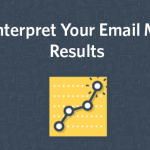Introduction:
Google does enormous updates and changes its algorithm. Most of the time, many websites suffer very badly with frequent updates by Google and there is a high dip in ranking and loss in traffic.
There are more than 200 ranking factors that decode Google ranking and the overall experience of your site and web pages. But not all the factors are equally important.
You can win the heart of SEO even by following less than 100 critically essential factors of ranking. But always remember one thing, SEO is not an overnight task where you can win the game in a single shot at the right time, in the right place.
Google ranking is a marathon where you have to put in consistent effort and good practice by delivering 100% quality over quantity.
Here, we will discuss the significant Google factors which affect the ranking of your website.
Let’s Categories all the crucial aspects of Google raking into 3 Major parts.
- On-Page SEO Factors
- Off-Page SEO Factors
- Technical SEO Factors
On-Page Website Ranking Factors:
Keywords:
Keywords can make or break your site. It is an essential thing in the whole SEO process. If you don’t research your keyword well, then you might get very less or Zero traffic. As per the report of Ahrefs, 90.63% of the pages get zero traffic from Google because of not choosing the right keywords.
Right keywords can target the right audience related to your niche, drive more traffic and finally bring more conversions.
There are two types of keywords, Short Tail Keywords, and Long Tail Keywords. Short Tail keywords such as “marketing”, “business”, “money”, and the like have very high search volume, but at the same time, they are highly competitive. And if you are new in the market, then it may take years to rank on the 1st page of Google for such keywords.
On the other side, Long Tail Keywords does not drive very high traffic, but they are easy to rank and can get you plenty of traffic.
SEO and Keyword Research Tools such as Semrush, Serpstat, Uber Suggest, Ahrefs, or Keyword Planner tell you about the competition, search volume, cost per click (CPC), and ranking difficulty level. You also get clear guidance about keyword ideas and content ideas.
Content, Blog Post Length and Readability:
Content is the top 3 ranking factors of Google. It is the most crucial and essential part of the content marketing world. In fact, with various updates by Google, content is now treated not just only as King but as a Kingdom.
The content must be related to your niche and should not be thin. You should produce high-quality original content with a minimum length of 800+ words.
Blog post lengths vary as per the industry. If you are in the marketing and advertising industry, blog length must lie somewhere between 1500-3000 words. As per the study of HubSpot and LinkedIn, the content which has 2000+ blog length gets the maximum engagement on Google. For health, travel, technology, and news publication websites, blog length should be somewhere 800-1500 words. Here’s an example of a 4000 words blog that covers all aspects of the topic – What are Chatbots. The length of 4000 words in the blog gets more shares compared to the generic ones.
So, it is super important to produce high-quality unique content with a length of at least 800+ words. It improves your Dwell time, increases engagement & credibility, and improves your bounce rate.
Google AI focuses more on user experience rather than a machine. Therefore, always use short, readable, and straight-forward words. Any sentences should not consist of more than 20 words. Write in the active voice rather than passive voice. Use subheadings and quotes to grab the attention of the audience. Any paragraph length should not exceed more than 300 words.
Title Tag and Length:
As per the study of Moz, your title tag should start with your main focus keyword. For example, if you want to write a blog post on “A complete guide on email marketing in 2020”, then the best approach is, “Email Marketing: A Complete Guide in 2020”.
The length of your title tag is equally important. Google only displays 50-60 characters of the title tag on the search page. Hence, keep it that way.
H-1, H-2 Headings:
H1 tag is the second title of the blog posts. As per Google, it is equally essential, and the second most relevant signal.
So, make sure, you should include your focus keywords in H-1 heading.
The best way to put keywords in H-1 heading is- Number of Trigger Words + Adjective + Keywords + Promise. So, your final H-1 Heading could be: “How can you learn email marketing at 15 minutes in 2020”.
Try to use 2-3 H-2 headings and keep using H-3 as a subheading. Your blog posts will be more readily with an excellent user experience.
URL Structure and Length:
Your URL length plays a vital role in Google ranking. You should choose a short URL that consists of your focus keyword only.
Do not put a name, date, or sequence number in your URLs, as it confuses Google and gives the wrong signals.
Image Alt Text:
Google has a dedicated search section for Images in its web search. Hence, you can not ignore Images and its relevance. Thus, make sure you have mentioned the file name, title, description, alt text, and caption.
Internal Links:
Internal links show the relevancy and correlation to the relative pages of your site. The number of internal links is directly proportional to the importance of your webpage. It brings more user engagement, with an increase in dwell time and less bounce rate.
External Links/Outbound Links:
Suppose you are taking reference from any reports/source, so do mention that link. It will increase the trust and credibility of your content.
Do not link to any outbound link in your content as your viewers will leave your page while clicking on those external links. It will badly affect your bounce rate and session time of your webpage.
Also, do not link weak websites that are having less domain authority. It can heart your ranking.
Anchor Text:
Exact-match anchor text has a strong influence on Google rankings. But try to avoid unnatural or spammy links as Penguin can penalize you.
Keyword Optimization:
Keyword optimization is a super important part of search engine optimizations. If you want to rank better, then try to optimize your entire content with the focus keywords. The most appropriate places where Google catches it the most are- the title tag, web page URL, H-1 Heading, in the first paragraph or first 100 words, and the conclusion part.
Content Updates:
Most of the websites hit badly by Google updates and the loose ranking with a drastic fall in order. One of the main reasons is they do not update their content.
Also, if you want to get better loading speed, ranking and traffic then delete all Zombie pages (Zombie pages are those pages that are on your site by not bringing any traffic). Google always prefers one strong web page over 100 thin and least useful pages.
Off-Page Website Ranking Factors
Dwell Time:
Dwell time is the amount of time that passes between the moment you click a search result and subsequently return to the SERPs. Google measures how long people are spending time on your webpage.
Domain Authority & Backlinks:
It is among the top 3 ranking factors of SEO and Google ranking. It majorly consists of the number of linking domains, the number of linking pages, and the domain authority of linking domains. The higher the domain authority you have, the higher you will rank.
Social Shares:
Social shares are also significant ranking factors, as it gives the external signals to Google, that “Hey, this content is getting more shares on social media platforms, such as Facebook, LinkedIn, Instagram, Twitter, Pinterest, Quora and more. So, let’s rank this particular content better on Google as well, as people like it.”
Also, there will be a high chance that people may link to their website as your content is excellent. When they will do this, this will increase your backlinks and DA.
Page Load Speed:
As per the study of Backlinko, he mentioned Google does not consider Page Speed as a ranking factor. But still, it is very relevant for your site.
The Founder and CEO of Amazon, Jeff Bezos, says, every extra second of loading, you lose 10% of customers because it hurts the user experience and irritates them.
Neil Patel, a dominant figure in the marketing industry, also says the loading speed of your site can make or break you.
If the site’s loading speed is less than 3 seconds, then it is considered a speedy site. So, you should track, optimize and improve your loading speed frequently. You will see most of the sites, that rank at the top, have less than 3 seconds loading speed time.
The website which is having more than 6 seconds is terrible in loading speed, and their bounce rates are often high as people have short time and less patience.
Do-Follow vs No-Follow links:
Google officially announces we don’t consider no-follow links to increase the site’s DA. It is the most controversial topic in SEO, but having a certain percentage of no-follow links is necessary to get a better balance between Do-follow vs Nofollow links. But, a higher percentage of No-follow links can put a negative impact and affect your ranking too.
Domain Age:
Another super important factor of Google ranking is- the age of your domain name.
Some people keep changing their domain name, as it doesn’t make any sense. The new domain name changes all the URLs, and it means you are copying content from old URLs to the new one.
You will lose your ranking, traffic, and recall value. So, do not change until it is exceptionally important.
Technical SEO (Another Website Ranking factor):
Sitemap:
A sitemap lists all your pages and influences your ranking on Google. You can set up a sitemap easily with Yoast or All in One SEO if your site is on WordPress.
Google Analytics:
Google Analytics gives you the complete data for your site such as bounce rate, session time, users, locations, demography and more. It also tells you which webpage is getting maximum views and clicks. Hence, you must install Google Analytics for your website.
Server location:
Server location is critically essential for local SEO. If you want to target your audience in a particular country, then your server should be of that location. Web hosting companies like Bluehost, WPX, and Kinsta provide multiple server locations where you can select, or migrate your server location.
Mobile Optimization:
Your site should perform on mobile well. Select your theme, font size in such a way that it increases user experience and mobile-friendliness.
You should explore and use Google AMP that can accelerate mobile pages. Mobile optimization increases your conversion rate.
Google Search Console Integration:
If your site is verified with Google webmaster, it helps you to index your web pages. Apart from this, it provides valuable data where you can optimize your site and make better strategies.
- Javascript
- XML sitemaps
- Hreflang
- Canonical tags
- 404 pages
- 301 redirects
Complete Checklist of Google Ranking Factors Infographic:

- 103 Google Ranking Factors and SEO Checklist
Digital & Social Articles on Business 2 Community
(46)








